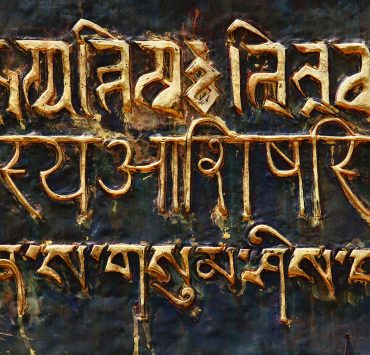
Meditation coach Emma Morrison is the go-to person for those…
Living your life with a greater awareness and intention is something we can all strive for. Our modern schedules and technologies can take up a lot of our energy. But stepping back from these stressors can provide us with beautiful rewards.
One way to enter into this state of greater awareness is to practice Kundalini meditation and Kundalini yoga. Kundalini meditation is a way of channeling your energy and releasing yourself from stress. It can also release you from the autopilot of your daily life.
Kundalini yoga awakens you to the power of your internal energy. It leads you to an expansive spiritual awakening that can touch every aspect of your life. While its exact origins are unknown, its tradition dates back to approximately 1,000 BCE to 500 BCE. Since then, this meditation tradition seeks to awaken, release, and harness your energy.
Kundalini yoga and meditation was popularized in the West by Yogi Bhajani in the late 1960s. Since then, it has become a popular way to develop body awareness, mindfulness, and stress relief.
Kundalini guides you to react in neutral ways to the ups and downs of life.
This ancient healing practice has demonstrated tangible scientific effects. Kundalini activates specific parts of the brain that increases one’s awareness and generates a more balanced control. Using breath, specific movement, and timing, it increases the nervous system on a cellular level. It can also increase one’s energetic awareness.
What Is Kundalini and What Is Its Purpose?

“Kundalini” is Sankrit and can be translated as “coiled snake.” This references the ancient belief that each person holds divine energy within them at the base of their spine. We are born with this energy and Kundalini works to “uncoil the snake.”
By connecting with our divine energy, we can release it through the seven chakras and out of the Crown chakra above the head.
The process of releasing energy from the body is meant to create a system of communication between your mind and body. This communication can relieve mental, physical, and spiritual issues. This system of awareness also connects you with your breath to facilitate being present. By establishing a new internal rhythm, you can communicate with a higher version of yourself.
Kundalini practice should be thought of as a technique, not a belief system.
It helps to clear away the clutter of the world while accessing the inner self. But it does not provide instant relief or enlightenment. “Uncoiling” is meant to be a consistent and persevered practice.
This method and tool can help rejuvenate you after a stressful day. With practice, you can manage stress in the moment and counteract your tiredness or fatigue. You can also balance your energy and chakras to calm down your mind.
This will help you act with purpose rather than react to your thoughts and environment.
Benefits of Kundalini Yoga and Meditation

Kundalini yoga and meditation are tools to achieve a life full of lightness, joy, and boundless love. In your practice, you will become more aware of your body geometry which will affect the energy, emotion, and motion throughout your being.
The benefits of Kundalini can be summarized as bringing more awareness and intention to your daily life. But it can also be broken down into these various rewards:
- Aids your concentration and prevents random thoughts from throwing you off balance
- Breaks your automatic daily routines and brings you into a state of mindfulness
- Brings balance to your mind, body, and soul
- Builds up your creative energy to tackle various projects in life
- Creates your awareness of life
- Enhances your brain patterns and emotional balance
- Helps reduce your anxiety
- Helps release stress and fosters a sense of peace
- Improves your cognitive functioning
- Improves your sleep and sleep-related issues
- Teaches you the proper way to breathe (through your diaphragm) and expands your lung capacity
What Triggers a Kundalini Awakening?

Kundalini awakenings can occur through many years of hard work and dedication. They also happen spontaneously when you’re not actively working to achieve it.
There truly is no rhyme or reason. But don’t get discouraged. Trust that your awakening will find you.
Your Kundalini also has a lot to do with the Karma of your current life as well as of your previous lives. Your spiritual journey begins long before you enter the physical body. And a dedicated yoga practice will help you get closer to this spiritual path.
Below are some practices to help you harness your Kundalini energy.
#1 Breath Work

Working with different breathing techniques helps to cleanse and purify the body and mind. There are specific pranayama exercises you can work with. But generally, you can also focus on consciously moving your breath all the way up and down your spine.
This will allow your life force to pass through each of your energy centers.
The most common breathwork used in Kundalini Yoga is Long Deep Breathing. To do this, breathe slow and deep in and out through your nose. Expand your stomach out on each inhale and contract your stomach on each exhale.
Another common breathwork practice is Breath of Fire. This can be practiced by breathing rapidly equal parts in and out through your nose. Pump your stomach to create oxygen in your blood and charge your electromagnetic field.
Breathwork is a great tool to use when you’re feeling stressed or overwhelmed.
Every meditation and kriya has a specific breath and posture which will help to generate or release specific energies.
#2 Mantras and Chanting

The use of chants, sounds, and mantras have the power to signal a chemical reaction in the brain and body which can positively affect your mood. The moods we feel all vibrate at specific frequencies. So chanting a mantra can attract the body to vibrate at that frequency.
Through practice, you can elevate your mood to these higher vibrations and create a more abundant and high-vibe state of mind.
But you don’t always have to be sitting in meditation to use mantras. You can also use mantras in your sleep or when driving. The energy of these sacred tones and sounds will fill your space and attract that energy into your reality.
Below are seven mantras that you can work with to stimulate each chakra:
- LAM (Root Chakra)
- VAM (Sacral Chakra)
- RAM (Solar Plexus)
- YAM (Heart Chakra)
- HAM (Throat Chakra)
- AUM (Third Eye)
- Silence (Crown Chakra)
#3 Kriyas and Asanas

“Kriya” is a Sanskrit word that can be translated as “action.” It is a set of exercises that combine breath, posture, and sounds. Through these specific set of actions and commitments, you can manifest action to take place. This works on all levels of your mind, body, and spirit.
Working your Kundalini energy through kriyas can create an overall healthy and abundant life.
Kundalini Yoga works with a sequence of repetitive movements and asana postures that cleanse the organs of toxins, boosts energy levels, and clears the subtle system. Hatha Yoga also focuses on awakening Kundalini energy through shatkarma, asana, pranayama, and meditation.
One kriya to practice is the Kriya for Balancing the Aura. This works quickly and effectively to protect your energy field. It also builds your physical stamina and elevates your energy.
Below are seven asanas that you can work to stimulate each chakra system:
- Malasana Yogi Squat (Root Chakra)
- Frog Pose (Sacral Chakra)
- Dhanurasana Bow Pose (Solar Plexus)
- Camel Pose (Heart Chakra)
- Cobra Pose (Throat Chakra)
- Balasana Child’s Pose (Third Eye)
- Sat Kriya (Crown Chakra)
#4 Mudras

Mudras are hand positions that lock and direct energy into different parts of the brain.
Thousands of years ago, yogis mapped out the hands. They figured out how they connected to different parts of the brain and body through specific hand placements.
One of the most common mudras in Kundalini Yoga is the Gyan mudra. This uses the thumb and index finger to stimulate knowledge. To perform this mudra, apply pressure with your thumb to your index finger. The index finger is associated with Jupiter which represents expansion. This mudra will have you experiencing receptivity and calmness.
Another mudra that opens up blockages of communication involves applying the pad of your thumb onto the nail of your pinky finger. Hold this position for one minute and develop the inner confidence to communicate all that you need.
Afterwards, lightly touch your thumb to your pinky finger and channel your communication energy to align with your ego.
Below are seven mudras that you can work with to stimulate each chakra system:
- The Muladhara Mudra (Root Chakra)
- Shakti Mudra (Sacral Chakra)
- Rudra Mudra (Solar Plexus)
- Padma Mudra (Heart Chakra)
- Granthita Mudra (Throat Chakra)
- Mudra of the Great Head (Third Eye)
- The Mudra of A Thousand Petals (Crown Chakra)
#5 Meditation

Meditations can make you feel awakened, heightened, and moved by the energy you’re releasing or creating.
Meditations in Kundalini Yoga are practiced at specific lengths to achieve results. For example, a 3-minute meditation affects your electromagnetic field and overall circulation of the body. An 11-minute meditation begins to alter the nervous and glandular systems of the body. A 31-minute meditation affects all the cells and rhythms of the body, clearing the subconscious mind.
Try this meditation below to give yourself a boost of energy. This can be performed when you wake up in the morning or in the middle of the day if you feel drained or depleted.
How To Do A Kundalini Meditation

Choose a quiet, distraction-free space that is at a comfortable temperature. This should be a peaceful spot where you are not likely to be bothered.
Keep a bottle of water beside you and dress comfortably. Your clothes should feel clean and fresh. Ideally, they should also be light in color to enhance the feeling of lightness.
Sit with your legs crossed comfortably with a straight spine. Place your palms together in a prayer pose at the center of your chest. Make sure your fingers are pointing up. With your eyes closed, focus your gaze at the brow point where your third eye is located. Your breath will be divided into four equal parts as you inhale.
After you breath in four equal parts, hold your breath and exhale. Break your outgoing breath again into four equal parts and hold for a few seconds. One each inhale and exhale, pull your navel towards your spine. Each breath cycle should take about 7-8 seconds.
Kundalini meditations are best practiced for 3-5 minutes. Over time, you can gradually increase the length of your practice.
You can also add the mantra “Sa Ta Na Ma” to this meditation, which means “Infinity, Life, Death, and Rebirth.”
This will help you focus your mind and connect you with your highest and most true self.
Other Ways to Evoke Your Kundalini Energy

1. Ritual and prayer. While often overlooked, ritual and prayer can be a powerful force when invoking your Kundalini energy.
2. Shaktipat is the transfer of spiritual energy from a great spiritual guru to their student. Generally, this occurs by touch but it can also be transmitted through mantras, words, or eye contact.
3. Intention and devotion. These qualities can be awakened through the dedicated study of philosophy and scripture. It is best practiced with prayer and intention as well.
4. Brahmacharya, or celibacy, is practiced under the traditional higher tantra. This exercises both physical and mental celibacy and urges its practitioner to seek union from an inward source rather than an outward source.
Signs of a Kundalini Awakening

The signs and symptoms of a Kundalini awakening is largely dependent on the energy blocks inside of each of us. We are all unique and beautiful in different ways, ultimately varying our individual awakenings.
But below are some tell-tale signs of a Kundalini awakening:
- Physical symptoms that include fever, chills, headaches, sweating, crying, or a tingling sensation down the spine
- Increased sensitivity, both emotionally and physically
- Change in sleep patterns
- A deep sense of interconnectedness with all things
- New ability to see the bigger picture, activating the third eye
- Acceptance of what is and relief from negative emotions
- Eagerness to practice non-violence
- Recognition of oneness and a desire to serve others
- Sense of connection to God, Divinity, or a higher power
- Sudden urge for radical change
- Profound sense of calm, composure, and peace
- Deepening of compassion, empathy, and understanding
- Ability to communicate freely and openly, unblocking the throat chakra
- Vivid or lucid dreams and enhanced intuition
- Stronger immune system as the body begins to thrive off of the energy within
In the end, a Kundalini awakening is a process. It will be dependent on your specific needs and blockages and will be unique to you. Be open to the process and move slowly with ease.
Remember to be kind to yourself and embrace the divine energy that resides within you, and only you.
What's Your Reaction?
Meditation coach Emma Morrison is the go-to person for those living in Salt Lake City, Utah, who need to release stress and tension or simply dive deeper into their meditation practice. In her writing, you’ll receive useful information on how to live a more fulfilling life.














